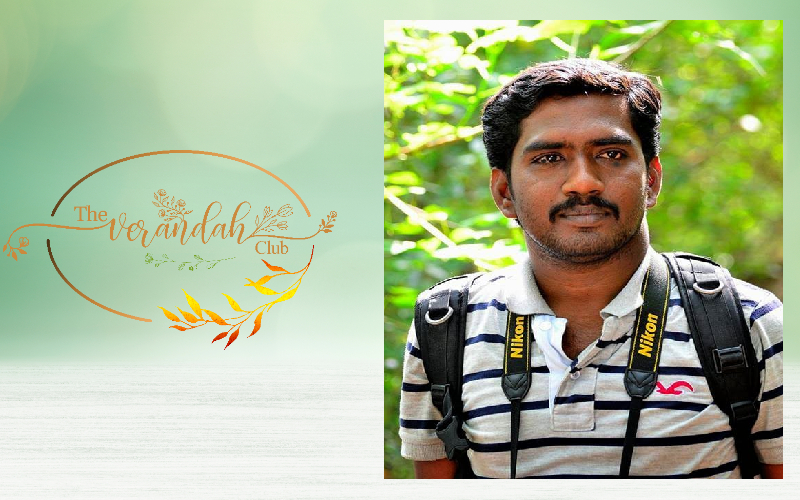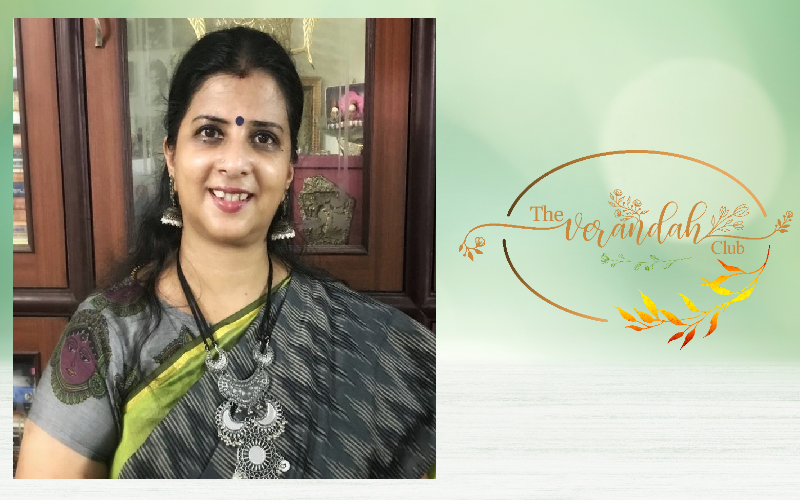Preserving Ancient Art through Modern Ways
Interview of Shri. Udhaya Sankar by Srimathi Padmapriya Baskaran (transcribed)

Udhaya Sankar is a 3D Graphic Designer and a Masonry Estimator. He has created a domestic photo archive of heritage sites for free use, particularly over 200 Jain heritage sites. He has been collecting Kolams from multiple native sources and categorizing them for free download. Apart from this, he has also created an open source ‘Kolam Generator’ – through which one Kolam art forms for various print and digital uses and also download patterns for recreating or learning new kolam patterns. He has developed the Adhinatha font in Unicode for those who are interested to learn or transcribe Tamil Brahmi inscriptions. He has created Traditional Kolam icons for each speaker in TEDx Chennai 2019 and is the proud winner of REACH Heritage Award, Arumozhi Virudhu, Digitall 2019 award to name a few.
Ph: 9940232560
For More Info, Visit: http://udhayam.in/ , http://udhayan-photos.blogspot.com/ , and http://surabhi.udhayam.in/

Sri. Padmapriya T S (Priya Baskaran) is an avid traveler and heritage enthusiast. She aims to create awareness about lesser known ancient heritage sites through her writing. Her blog ‘Aalayam Kanden’ is among top Indian travel and spiritual blogs. She advocates for heritage appreciation, conservation, and sustainability through the ‘Aalayam Kanden Trust,’ for which she is the founder.
Interview:
1. “At a young age, you have digitally contributed a lot to the preservation of our heritage and culture which would be remembered by generations. My questions to you are, as a technologist, what inspired your attention towards preserving our culture and heritage?
Ans: “(Greetings!) In 2001, I started studying AutoCAD (an engineering and designing software). During that time, I was in search of new patterns and designs. Everyone normally used shapes applied in construction for design. But I thought to myself that when we have so many designs and patterns in our own culture (Kolams) why not apply the same to AutoCAD? During my childhood days, I’ve seen my mother draw various Kolams in several permutations and combinations, particularly on festivals and It has always attracted me.
I started a digital archive of small designs in 2011 and have been on a pattern quest since then. . There were plenty of foreign websites which offered Indian heritage site photos for a price. On looking at them I came up with the idea of creating my own website based on Indian culture. The website, www.udhyam.in was started for sharing pictures and photos related to our culture. I also started uploading various Kolams there.
There were various technical difficulties that a person desirous of getting images of Kolams on flex boards or printed matter would face. To help them, I came out with ‘Surabhi’ – a platform where one can design any type of Kolam on their own digitally. Instead of giving readymade patterns to users, I thought, why not a platform where they can experiment and come up with their own customized designs? I made use of open-source tools to create this. Basically, my website would provide users with a virtual pen, board, choice of line-thickness, and colors using which they can create designs of choice. I also started compiling various art forms. This was my starting point. I always felt an awe for our culture and tradition and that can be stated as my inspiration.”
2. “Can the user select what type of Kolam they wanted to create? Will they get an instant result?”
Ans: “There are three options that the user shall be provided with. One, the website has Gallery’ from where they can avail numerous preloaded Kolam patterns which could be used to draw. The second option is ‘Kola – Surabhi’. Users can choose the type of Kolam they want, it may be dotted-kolams, or pattern-kolams, and the system automatically generates new patterns using their chosen variables. The third option is, I have developed animated videos of 50 kolams with the easiest permutation and pattern and uploaded in YouTube. Users can see the patterns, follow the instructions, and draw their own patterns.”
3. “What about the charges the users need to pay for accessing the website?”
Ans: “All options in my website are available for users FREE-OF-COST. Only open source materials have been used so I’m not willing to charge anything. This is the art I got from the people and hence I’m returning it to them without charging.”
4. “We now spoke about Kolams. I am also aware that you have created a Tamil font called ‘Aadhinatha’ to read Tamil Brahmi inscriptions. Can you describe your experience?"
Ans: “Few friends who worked with me on creating the Kolam patterns website, also suggested creation of fonts to document ancient Tamil scripts such as Tamil Brahmi. After working a lot on it, the Adhinatha font was created. I was a designer for the font. As a designer, I had to gather many alphabets, for which I had to undertake an extensive research by reading various ancient texts. There were various Tamil authors who had quoted about various caves and carvings where the old Tamil script would be found. I took the reference from books and inscriptions and started designing the font. It took nearly six months for us to create the font. In certain places, we modified the already found script but at others we had to visit caves to trace the actual Tamil Brahmi text. We also faced several problems with scaling of the text and adjusting the height of the letters which took a longer time than expected.
We had created the font in 2011 - 2012. Despite the cost involved, we made the font available to everyone free of cost.. Few conjunct consonants in Tamil were difficult to be converted into the ancient Brahmi text as their representations were not in usage. Similarly, the other way round, the process of converting the Brahmi text to ordinary Tamil was also difficult during those times. So, we had to create a convertor.
There are three types of people who might need to use inscriptions; experts; heritage enthusiasts; and general public out of interest. Prior to the creation of this font, if someone needed to read or write in Tamil Brahmi, the enthusiasts could contact the experts because they knew them, but it would not be feasible for general public.
Therefore, we created this convertor in order to make it easy for anyone with interest to read the Tamil Brahmi script. If someone wanted to know their name in Brahmi text, they just have to type their name in Tamil in the space provided, press the convert button and they would get their name in Brahmi script. The website has a very good reach with the public. People have used it to write their name in Brahmi script in their vehicles, finger rings, name boards in their houses, and even in wedding and visiting cards.”
5. “Is it possible for someone to learn the Tamil Brahmi script using this font?”
Ans: “Absolutely. Some will be interested only in getting their name written using the script, few others may be interested to learn the whole script. Both become possible through the convertor. We have even published ‘Thirukkural’ and ‘Tholkappiyam’ in Brahmi script. The convertor is absolutely free to use without installation of any software from http://udhayam.in/."
6. “Interestingly, you are also using the website as a photo gallery where people can find heritage site photos of their choice. What are the conditions for accessing the site and what kind of photos can be found, by which I mean size and other variables?”
Ans: “On reading the books of IAS officer and Tamil Brahmi expert Shri. Iravatham Mahadevan, I came to know that the place where I lived, Madurai, had many hills which in turn sheltered Jain inscriptions (Samana Palligal in Tamil). I did not realize the significance of the places near me until I read about them I started to visit all these places, particularly, in search of ancient Tamil letters.
I also collected photos of these sites. I wished to make a documentary of these sites and as a first step standardized the photos and made it available for everyone free of cost. If someone wishes to contribute heritage photographs that they have captured for free download and use to the website, then we upload them with appropriate credits to the photographer if they meet sizes mentioned in the website.”
7. “I’m happy that you are digitizing old manuscripts and books using a camera and a photobox. How will guide others to do the same if they have manuscripts or old documents at home?
Ans: “Fundamentally, when someone is trying to capture a photo of palm leaf manuscripts or inscriptions, , they must make sure other external lights do not interfere, as it would distort the clarity of the image. There should be only one light which has to be set up without interfering with the image. For as simple as a passport size photo, we have lot of light set up in the studio. A miniature light set up should be made to take a good photo. We also provide technical assistance for anyone wanting to document old manuscripts by guiding them on the right use of light, camera and a photobox.
8. “What are your future plans?”
Ans: “All information and books available on our heritage and culture is scattered among different sources and individuals. According to me, first the availability of the books and their sources need to be catalogued. Few people may be in possession of rare books which could be digitized and made available to researchers and enthusiasts. Data must be structurally organized. A forum which provides the information available in various sources is to be created and made accessible to anyone with interest in heritage where free access and exchange of information can take place. Our sub-project will be to document the various symbols found in palm leaf manuscripts and inscriptions.
I shall say that by organizing and cataloguing the information, the process of sorting becomes easier. Documenting also plays an important role in preservation and transmitting the information to generations. Inscriptions will help us to know and understand more of our history, which will eventually be helpful in widening our vision.”
Kudos to Sri. Udhaya Sankar from The Verandah Club for the kind of noble work that he is doing in preserving our culture and ancient wisdom!
NEXT ARTICLE

At the southernmost tip of this mesmerising ensemble lies the majestic Great Nicobar Island, boasting an impressive landmass of about 910 square kilom...

Bharath has always been a land traversed by spiritual masters/ Guru since time immemorial. These spiritual masters have always upheld the core princip...

South India contains its fair share of unique pilgrimage centres. These divine places of worship have a prominent Sthala Purana, devoted followers, di...